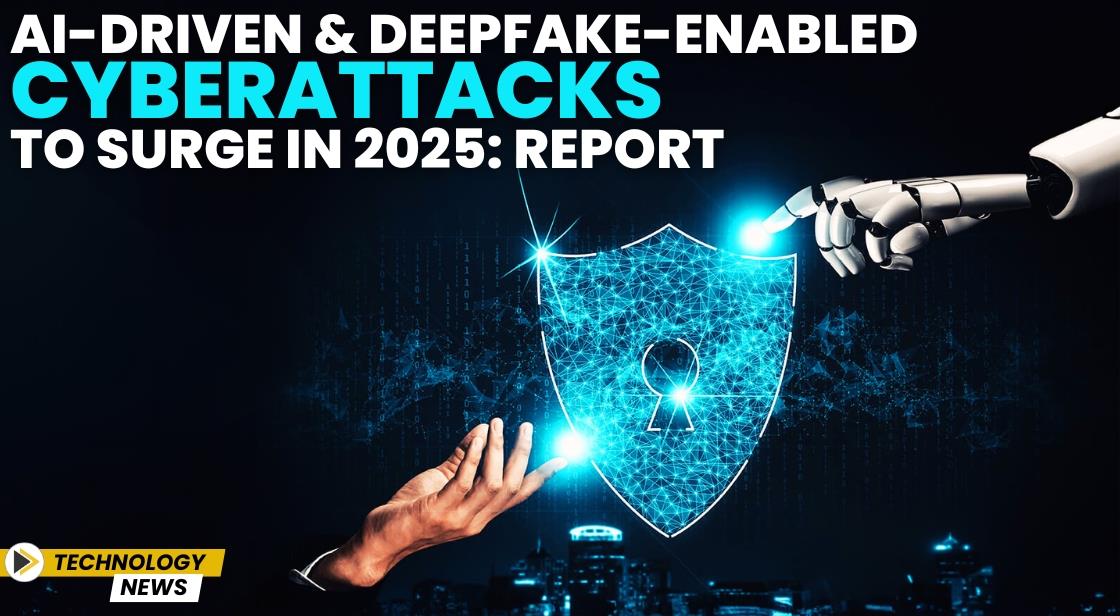AI-driven and Deepfake-enabled Cyberattacks to Surge in 2025: Report

News Synopsis
As the digital threat landscape continues to evolve, experts warn that AI-driven and deepfake-enabled cyberattacks are expected to rise significantly in 2025. Key industries such as healthcare, finance, and critical infrastructure will be most vulnerable to these attacks, according to a new report from the Data Security Council of India (DSCI) and Seqrite.
Increasing Sophistication of AI-driven Cyberattacks
The India Cyber Threat Report 2025 highlights the growing sophistication of cybercriminal tactics, with AI playing a central role. "Artificial Intelligence (AI) will be used to develop highly sophisticated phishing campaigns utilizing deepfake technology and personalized attack vectors, making them harder to detect."
As AI evolves, so do the capabilities of cybercriminals, who are now deploying AI-driven malware that can adapt in real-time to evade traditional security measures. Additionally, data poisoning attacks, which compromise the integrity of critical AI systems in sectors like healthcare and autonomous transportation, are becoming a major concern.
Deepfakes and Social Engineering: A Dangerous Combination
One of the most concerning developments is the use of deepfake technology. By generating convincing fake audio and video messages, cybercriminals can manipulate trusted figures to carry out malicious activities. These deepfakes enable more effective social engineering, where individuals are tricked into executing malware or disclosing sensitive information.
The report emphasizes that "deepfake technology will create compelling malicious content, including fake video or audio messages from trusted sources." This technique allows cybercriminals to bypass traditional security systems by leveraging human trust.
AI and Supply Chain Vulnerabilities
The convergence of AI capabilities with vulnerabilities in supply chains is another emerging threat. "Cybercriminals will employ AI-driven methods to execute intricate attacks, taking advantage of compromised development resources and hardware manufacturing processes to insert malicious code through corrupted libraries and embedded hardware." This attack vector could lead to widespread security breaches, particularly in the tech and manufacturing sectors.
Rise in Ransomware Attacks and Botnets
With AI tools becoming more accessible, cybercriminals can automate and scale their operations more effectively, expanding their reach to a larger pool of victims. This is expected to result in a sharp increase in ransomware attacks, where hackers demand ransom for the restoration of compromised data.
"The rise of internet devices will open new avenues for cybercriminals to develop large-scale botnets," warns the report. Vulnerabilities in poorly secured devices will be exploited to execute Distributed Denial-of-Service (DDoS) attacks, which could disrupt essential services in industries like healthcare and manufacturing, which rely heavily on edge computing.
Prime Targets: Critical Sectors in India
In India, critical infrastructure sectors such as healthcare, finance, and energy remain prime targets for cyberattacks. These sectors are frequently targeted to disrupt services, steal sensitive data, or exploit geopolitical tensions. The report underscores the importance of robust security frameworks and continuous monitoring to protect these vital sectors.
Hybrid Threats and Cryptocurrency Attacks
The rise of fake government service apps and fraudulent investment platforms is another significant threat. Cybercriminals are expected to create sophisticated applications mimicking government benefit systems and financial services. These "hybrid threats" will use social engineering and influencer marketing tactics to perpetrate financial fraud and identity theft, impacting public welfare recipients and retail investors alike.
Moreover, with the increasing prevalence of cryptocurrency, cryptojacking attacks are anticipated to rise, where malware hijacks computing resources to mine cryptocurrencies without the user’s consent.
The Future of Cybersecurity: AI-Driven Solutions
The rapidly changing cyber threat landscape of 2025 requires organizations to rethink their security strategies. The report notes that traditional security models are becoming ineffective against emerging threats, including quantum attacks and AI-driven malware. "CISOs should prioritize adopting AI-enhanced security operations and leveraging machine learning (ML) for predictive threat intelligence and automating incident response," it advises.
Furthermore, the report stresses the need for cyber resilience, not just prevention. As threats become more complex, businesses must strengthen their detection capabilities and enhance their incident response systems.
Conclusion: A New Era of Cyber Threats
The India Cyber Threat Report 2025 paints a picture of a rapidly evolving digital threat landscape, where AI and deepfake technologies will increasingly be used to exploit vulnerabilities across multiple sectors. To protect against these emerging threats, organizations must adapt by embracing AI and ML for faster detection, response, and recovery. The need for continuous vigilance and robust security measures has never been more critical.
You May Like









